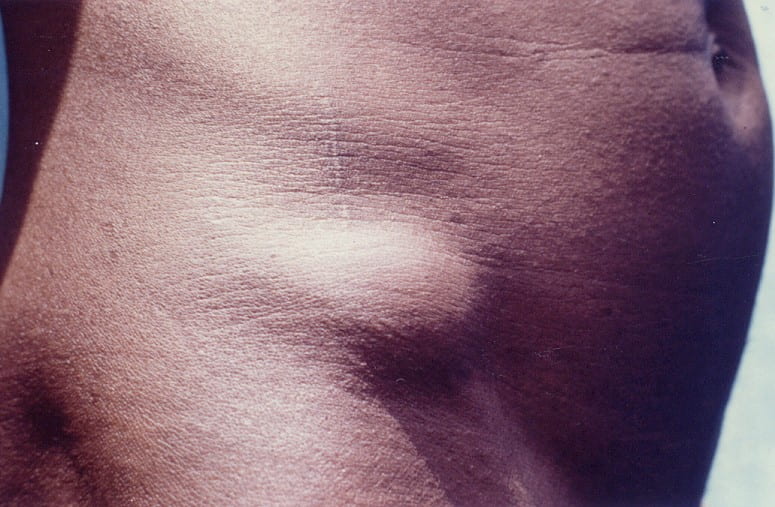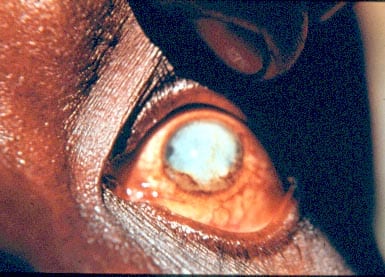Onchocerciasis (“oncho”) is similar in some ways to Lymphatic Filariasis in that it is a vector-borne nematode parasitic disease that causes severe disability. Oncho affects approximately 33 million people, mostly in 30 countries in sub-Saharan Africa (with small foci in Latin America and Yemen).
Onchocerciasis causes blindness and severe skin disease, and it is spread by black flies. Onchocerca volvulus adult worms live in subcutaneous nodules and are less sensitive to available drug treatments than those adult worms of the species that cause LF. They also have a longer lifespan (approximately 14 years rather than the estimated 7 years for LF parasites).
Photo legend: A subcutaneous nodule containing adult O. volvulus over the iliac crest; Severe onchodermatitis in a young woman; Cornea scarring from Onchocerciasis
Several programs and developments (the Onchocerciasis Control Programme, the African Programme for Onchocerciasis Control, and the Mectizan Distribution Programme) greatly improved the Oncho situation. OCP ended in 2002 and APOC ended in 2015. The goal for onchocerciasis has recently shifted from control and disease prevention to permanent elimination. OEPA has nearly eliminated Oncho in the Americas. Oncho elimination in Africa is managed by WHO and the Expanded Special Project for Elimination of Neglected Tropical Diseases (ESPEN).
While local elimination of Oncho in isolated areas in Africa can be achieved in the near future with periodic mass administration of ivermectin, computer modeling studies predict that it may take several decades to eliminate Oncho across Africa. More effective treatments could greatly accelerate this process.
Learn more about Onchocerciasis (Oncho) at the following sites:
Centers for Disease Control (CDC)
World Health Organization (WHO)


